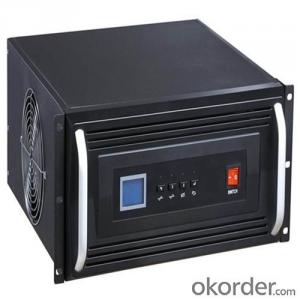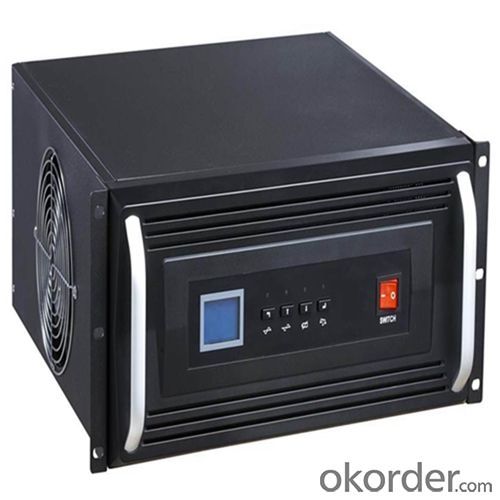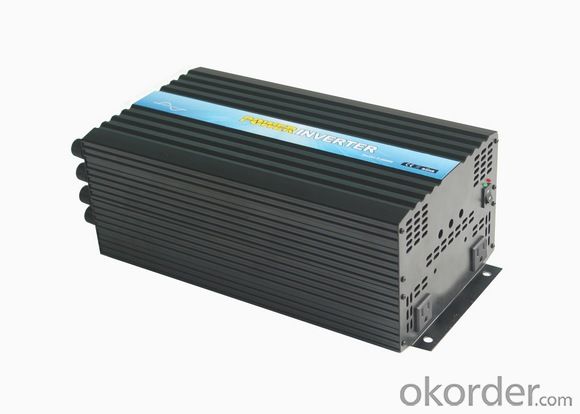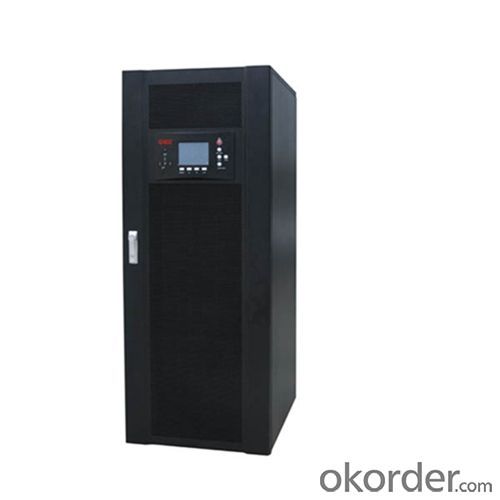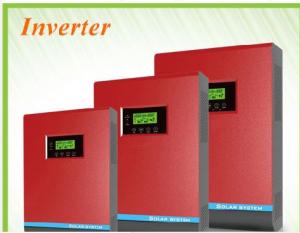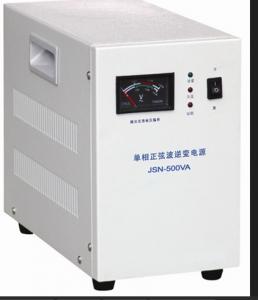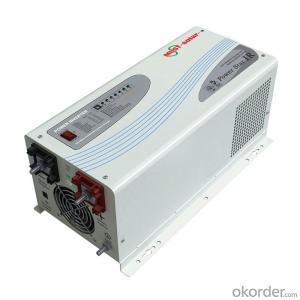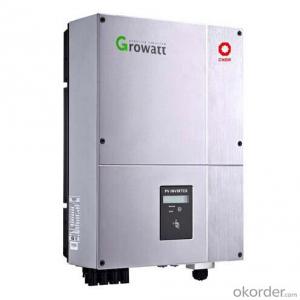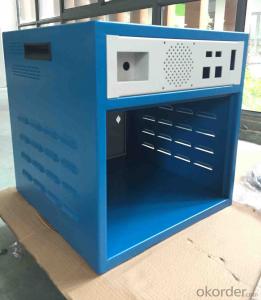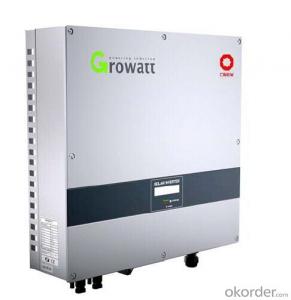CNBM-1500TL Solar Inverter Off Grid
- Loading Port:
- Shanghai
- Payment Terms:
- TT OR LC
- Min Order Qty:
- 1000 watt
- Supply Capability:
- 100000000 watt/month
OKorder Service Pledge
OKorder Financial Service
You Might Also Like
1.Features of the Solar Inverter
Maximum efficiency of 97.8% and wide input voltage range
Internal DC switch
MTL-String
Sound control
Bluetooth/RF technology/WF-Fi
Transformerless GT topology
2.Data sheet of the Solar Inverter
| Model | CNBM-1500TL |
| Input data (DC) | |
| Max. DC power | 1800W |
| Max. DC voltage | 450V |
| PV Voltage Range | 100V~450V |
| Max.input current | 10A |
| Number of MPP trackers/strings per | 1/1 |
| MPP tracker |
| OUTPUT (AC) | |
| Rated AC output power | 1600W |
| Max AC power | 1650W |
| Max output current | 8A |
| Power Factor | 1 |
| THDI | <3% |
| AC connection | Single phase |
| Efficiency | |
| Max efficiency | 97% |
| Euro weighted efficiency | 96.5% |
| MPPT efficiency | 99.5% |
| Protection devices | |
| Output over voltage protection varistor | yes |
| Ground fault monitoring | yes |
| Grid monitoring | yes |
| GENERAL Data | |
Dimensions, D X W X H (mm) | 360x329x132 |
| Weight (kgs) | 11.5 |
| Operating temperature range | -25℃...+60℃ |
| Altitude | 2000m(6560ft)without derating |
| Self Consumption night | <0.5W |
| Topology | Transformerless |
| Cooling concept | Natural |
| Environmental | IP65 |
| Protecting Rating |
| Features | |
| DC connection | H4/MC4(opt) |
| Display | LCD |
| Interfaces:RS485/RS232/Bluetooth/RF/Zigbee/Wifi | yes/yes/opt/opt/opt/opt |
| Warranty:5 years/10 years | yes/opt |
| Certificates and approvals | CE.VDE 0216-1-1.DK5940.G83/1-1.G59/2.RD1663.EN50438.CEL-021.ICE-62109.ENEL-Guide |
3.Applications of the Solar Inverter
Inverter not only has direct communication transform function, but also has the maximum limit to carry on the function of the solar cell function and system fault maintenance function. In the aggregate, have active operation and shutdown function, maximum power tracking control function, prevent operation function alone (grid system use), the active voltage adjustment functions (grid system use), dc testing functions (grid system use), dc grounding detection function (grid system use)
4.IMages of the Solar Inverter
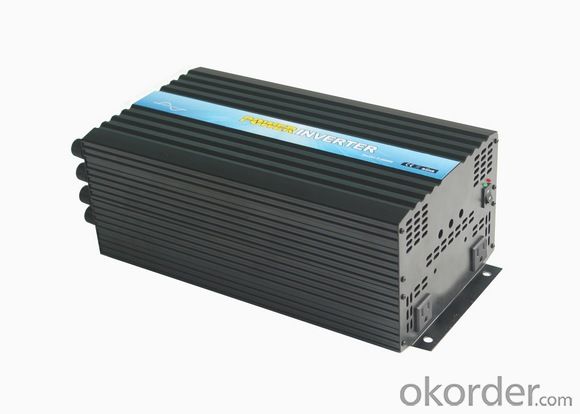
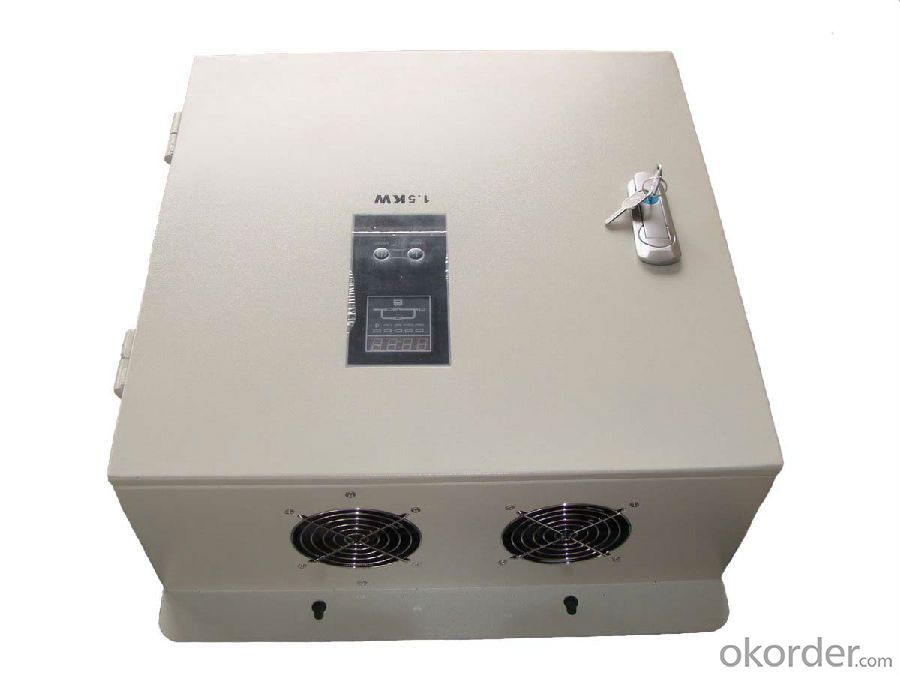
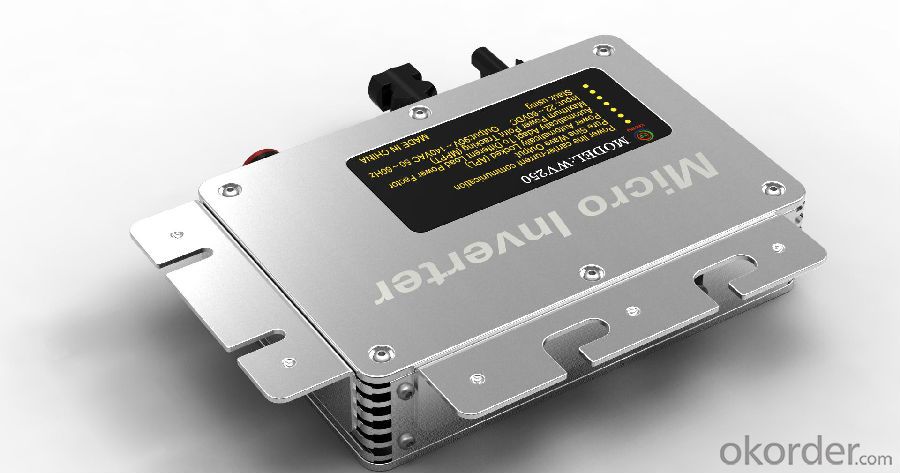
FAQ
Q: Do you have the CE, TUV, UL Certification?
A: We’ve already passed all the tests, and any certificate is available.
Q: Have you ever sold your products to companies in my country?
A: Of course, we have customers in all general PV markets, but I think we should expand our market share along with the market growth.
Q: When did your company set up? You are a new company, how can I believe your quality?
A: We entered into Solar PV industry in 2005, now we have several plants in manufacturing of a-Si and c-Si panels, and our capacity is 220MW per year. Till now we have already passed all the tests by authorized laboratories, e.g. TUV, CE, UL.
Q: Can you help us install the module if we cooperate with you?
A: We haven’t entered into installation sector, but we have the plan in near future.
Q: How do you pack your products?
A: We have rich experience on how to pack the panels to make sure the safety on shipment when it arrives at the destination.
Q: Can you do OEM for us?
A: Yes, we can.
Q: Can we visit your factory?
A: Surely, I will arrange the trip basing on your business schedule.
- Q: What is the maximum number of MPPT inputs in a solar inverter?
- The maximum number of MPPT inputs in a solar inverter can vary depending on the specific model and brand. However, in general, solar inverters can have anywhere from one to multiple MPPT inputs, with some high-end models offering up to six or more MPPT inputs.
- Q: What is the impact of temperature on the performance of a solar inverter?
- Temperature has a significant impact on the performance of a solar inverter. As temperature increases, the efficiency of the inverter tends to decrease. This is primarily due to the fact that high temperatures can lead to increased resistive losses within the inverter's components, resulting in reduced overall efficiency. Additionally, excessive heat can cause the inverter to experience thermal stress, leading to potential malfunctions or even failures. Therefore, it is crucial to consider temperature management and cooling measures to optimize the performance and lifespan of a solar inverter.
- Q: Can a solar inverter be used in areas with high levels of electrical noise or interference?
- In areas with high levels of electrical noise or interference, a solar inverter can indeed be utilized. However, it is crucial to verify that the solar inverter is specifically designed and equipped to handle such conditions. Some contemporary solar inverters come with built-in features and technologies that aid in minimizing electrical noise and interference. These features encompass advanced filtering, shielding, and surge protection mechanisms. In addition, employing proper grounding and installation techniques can further diminish the impact of electrical noise and interference on the solar inverter's performance. To ensure compatibility and optimal performance in high-noise environments, it is recommended to seek advice from a professional or the manufacturer of the solar inverter.
- Q: What is the role of a data logger in a solar inverter?
- The role of a data logger in a solar inverter is to collect and store data related to the performance and operation of the solar panels and the inverter. It records important information such as the amount of energy produced, the voltage and current levels, as well as any faults or errors that may occur. This data is then used for analysis, monitoring, and troubleshooting purposes, allowing users to optimize the performance and efficiency of their solar energy system.
- Q: What is the role of a power management system in a solar inverter?
- The role of a power management system in a solar inverter is to efficiently convert and manage the electricity generated from solar panels. It regulates the flow of power, optimizes energy production, and ensures the safe and reliable operation of the solar inverter system. Additionally, it provides protection against overvoltage, overcurrent, and other electrical faults, maximizing the overall performance and longevity of the system.
- Q: Can a solar inverter be used with different brands of solar panels?
- Yes, a solar inverter can generally be used with different brands of solar panels as long as the panels have compatible voltage and power ratings. However, it is recommended to consult the manufacturer's specifications and guidelines to ensure compatibility and optimal performance.
- Q: What is the difference between a central inverter and a string inverter?
- A central inverter is a type of inverter that is used in large-scale solar installations. It takes the direct current (DC) electricity generated by multiple solar panels and converts it into alternating current (AC) electricity that can be used to power homes or businesses. A central inverter is typically located in a central location, such as a utility room or basement. On the other hand, a string inverter is a type of inverter that is used in smaller-scale solar installations. It also converts DC electricity from multiple solar panels into AC electricity, but it does so at the string level. This means that each string of solar panels has its own dedicated inverter. String inverters are usually installed near the solar panels themselves, which can make them more convenient for maintenance and troubleshooting. In summary, the main difference between a central inverter and a string inverter is the scale of the solar installation they are used in and their physical location. Central inverters are used in larger installations and are located centrally, while string inverters are used in smaller installations and are located near the solar panels.
- Q: How do you calculate the power loss in a solar inverter?
- To calculate the power loss in a solar inverter, you would subtract the output power of the inverter from its input power. The input power can be determined by measuring the DC current and voltage at the input, while the output power can be determined by measuring the AC current and voltage at the output. The difference between the input and output power represents the power loss in the solar inverter.
- Q: What is the role of a solar inverter in a battery storage system?
- The role of a solar inverter in a battery storage system is to convert the direct current (DC) electricity produced by the solar panels into alternating current (AC) electricity, which is compatible with the electrical grid and can be used to power household appliances or feed back into the grid. Additionally, the solar inverter manages the charging and discharging of the batteries, ensuring efficient energy storage and usage.
- Q: Can a solar inverter be used with energy storage systems?
- Yes, a solar inverter can be used with energy storage systems. In fact, solar inverters are often used in conjunction with energy storage systems to convert the direct current (DC) energy generated by solar panels into alternating current (AC) energy for use in homes or businesses, while also charging and discharging energy from the storage system as needed. This allows for greater flexibility and efficiency in managing and utilizing solar energy.
Send your message to us
CNBM-1500TL Solar Inverter Off Grid
- Loading Port:
- Shanghai
- Payment Terms:
- TT OR LC
- Min Order Qty:
- 1000 watt
- Supply Capability:
- 100000000 watt/month
OKorder Service Pledge
OKorder Financial Service
Similar products
Hot products
Hot Searches
Related keywords
